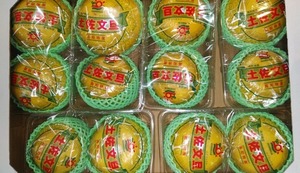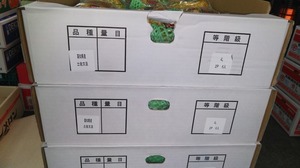Who is responsible?
The role of children's cafeterias: Children's cafeterias are free or low-cost cafeterias that children can go to alone, and they play a role in providing meals to children, eliminating the problem of eating alone, providing food education, and even providing a place for community interaction. The two pillars of their activities are child poverty countermeasures and community exchange hubs. Children's cafeterias are a voluntary and independent initiative initiated by the private sector, and are said to have started in 2012 with the efforts of a greengrocer in Ota Ward, Tokyo. In the eight years since their inception (2020), the number has exceeded 3,700 nationwide, and their recognition has increased to the point that 80% of the public responded that they have heard of the term "children's cafeteria." In the 2023 survey, the number of children's cafeterias nationwide increased by 1,768 from the previous year to 9,131, bringing the total number of public junior high schools and compulsory education schools nationwide to 9,296. This is almost the same as the previous survey. This is the largest increase since the survey began in 2018. From the Ministry of Education, Culture, Sports, Science and Technology's "2023 School Basic Survey (Preliminary Values)"
【Product name】
Kochi Prefecture seems to be soliciting donations from everyone who agrees with the purpose in order to continue to support the efforts of the "Kodomo Shokudo". It seems that the donations received will be accumulated in the "Kochi Prefecture Children's Cafeteria Support Fund" together with the prefectural expenses and will be used to subsidize the organizations that operate the "Children's Cafeteria". (Donations to the prefecture are subject to donation deductions, etc.) A children's cafeteria actually exists to stop poverty and declining birthrate throughout Japan. The reality is that it refers to a community where local residents and local governments take the lead in providing meals to children for free or at low prices. In addition, it seems that it is possible for office workers who return late and families who do not have time to do housework to gather and eat, not just as a place to provide meals for children. In this way, the creation of a "place where many people gather" seems to function as a place for communication among local residents. It is a famous story that the children's cafeteria started with voluntary and voluntary efforts from the private sector. “Shimanto Town, Takaoka District, Kochi Prefecture”, Kubokawa Town, Taisho Town, and Toowa Village merged-Born on March 20, 2006. It is located in the middle reaches of the Shimanto River, which flows from east to west. The southeastern part faces Tosa Bay. It is an area of 43.7 km east-west, 26.5 km north-south, and a total area of 642.28 km2. Forests account for 87.1 % and fields account for 4.8 %.Many of the settlements are located along the Shimanto River and its tributaries, along rivers and on plateaus. Eastern Shimanto Town (Formerly Kubokawa Town): Located on the Konandai plateau at an altitude of 230 m in the Shimanto basin, which flows southward in the central part.In addition, about 2,000 ha of agricultural land has spread. The center (formerly taisho town) is located in the northern part of the Hata district, "Kitaha Region". The Shimanto River arrives in the plain. It can be seen slightly along the Yusuhara River, but most of it is occupied by forests.Western (Formerly Toowa Village): The Shimanto River meanders from east to west in the center. Agricultural land is scattered along the basin, and forests occupy about 90% of the total area. “Niyodogawa Town, Agawa District”, The prefecture's Agawa Village, Ikegawa Town, and Niyodo Village merged-August 1, 2005. It is located in the northwestern part of the prefecture, about 50 km from Kochi City. In addition, it is about an hour and a half by car. Located between Kochi City and Matsuyama City when viewed over a wide area. The area where Japan National Route 33 and Route 439, which connect each other's cities, intersect. It is blessed with beautiful nature across the Shikoku Mountains to the north and the Niyodo River to the east and west. The Niyodo River, which flows through the town, originates in Kumakogen Town, Ehime Prefecture. Collect many tributaries such as Choja River and Doi River and pour them into the Pacific Ocean. The terrain has an elevation of about 100 m to 1,800 m and forms a mountainous area. The villages are scattered along the river or at the foot of the mountain. The altitude difference is large, and the average temperature is around 15 ° C in the mountains. It seems that there is some snowfall in winter. Also, there is a lot of rain during the East Asian rainy season. From summer to autumn, there is a lot of heavy rain due to the effects of typhoons. It is a relatively warm and rainy area, with annual precipitation reaching 2,500 mm. Taking advantage of the site conditions-The satoyama industry, including agriculture and forestry, has been the mainstay for a long time. Tea-processing industry-It boasts one of the largest outputs in the prefecture and is known as a tea area. “Aki City”, A garden city located about 40 km east of the prefectural capital Kochi City. Japan National Route 55 crossing the south-Form the largest urban area in the eastern part of the prefecture. South faces Tosa Bay : The north is backed by the Shikoku Mountains and borders Tokushima Prefecture. The Aki River and Ioki River flow south to the Center : The Aki Plain extends into the basin. The plain has been open as an agricultural area since ancient times. The system of land subdivision in ancient Japan is laid down by the allotment of rice paddies for cultivation during the cultivator's lifetime (ritsuryo system). “Wamyo Rijosho” made in the 10th century-The Tamatsukuri and Kurodori settlements also existed. Medieval era-Minister of the Left, Soga no Akae lost to jinshin war and swept away by Tosa : Mr. Aki, a landlord who called himself a descendant, has occupied the Aki region for generations. The end of the Warring States period-Shikoku Unity loses the battle with Motochika Chosokabe and perishes-Tosa seven was proud of its authority and prestige among the great tribes : It's been about 300 years before it perished. After that, Chosokabe's era lasted for about 30 years. In the Edo period, it was designated as the Tosa domain. Tameshige Goto, a senior vassal of Daimyo-Kazutoyo Yamanouchi, knew and acted on Aki.Since then, successive generations have dominated until the Meiji era. After the feudal affairs, small villages, townships, and uras merged repeatedly. In 1889, it was integrated into nine villages according to the policy of the central government. The merger has been repeated until now. Agriculture : Take advantage of abundant water, long daylight hours and warm climate. Facility gardening that grows crops in greenhouses is popular. Eggplants, green peppers, green peppers, Japanese ginger, etc. are cultivated. The production of winter and spring eggplant is thriving, making it one of the leading production areas in Japan. Agriculture of environmental conservation type-We are working ahead of the rest of the country. Pest control using natural enemy insects that do not rely solely on chemically synthesized pesticides. Agriculture is being carried out with a reduced burden on the environment.In the Hilled rural area, mainly ‘Yuzu’, the production volume is the highest in Japan. “Kuroshio Town, Hata District”, Located in the southwestern part of the prefecture, in the eastern part of the county. The area of the town is 188.46 km2. Unique to southern countries-It is warm and has a lot of rain, with an annual average temperature of 17 degrees and an annual precipitation of around 2800 mm. Taking advantage of this climate, agriculture is flourishing. In the Ogata area, protected horticulture, floriculture(Lily, Gypsophila), and paddy rice have been mainly practiced from early on. Among them, facility cucumber, facility leek, etc. are known. Also, in the Saga area, “Tosa bonito single fishing fishery” is flourishing. In recent years, perfect sun-dried salt is also a typical special product. Shimeji mushrooms and shiitake mushrooms are cultivated and are delicious. The coastline with beautiful sandy beaches and rocky shores and lush mountains spread out. Utilizing natural resources-Whale watching, making Seared Bonito slices etc., Experience-based sports tourism and promotion of tourism utilizing Tosa Seinan Great Park. In addition, many people come from inside and outside the prefecture.In a town full of nature, a 4 km sandy beach is likened to an “art museum. ”You can see, play and enjoy something almost all year round. Symbolize the town : Tree, Kuromatsu / Magnolia compressa. The flowers are lily / camellia japonica. The bird, Kentish plover / silvereye. “香美市” : It was merged with Tosayamada Town and Kahoku Town and Monobe Village to form Kami City on March 1, 2006. It extends from the commuter town area of Kochi City to the mountainous area with abundant nature. It is a town with a vast area of 538 km2. Famous spots for fresh greenery and autumn leaves “Befukyo” and “Nishikuma Gorge”, “Mt. Miune”. Kami City Mr. Yanase Takashi Memorial Hall Anpanman Museum and Poem & Märchen Gallery, Nationally designated natural monuments and historic sites such as “Ryugado Cave.” Many tourists come to the tourist spots from outside the prefecture. Tosa forged cutlery and fluff of historic traditional industry. Taking advantage of the blessings of nature-New varieties of yakko green onion, leek, ginger, oba, peach (Karikari-Momoko) : Production of shiitake mushrooms and Yuzu ball, which has the largest shipment volume in Japan, is also active. Kochi University of Technology in the city : Collaborate with local industry and local communities-Mutual cooperation and exchange between industry, academia and government : Expected to revitalize new industries along with Kochi Techno Park. “Tosa Pomelo”, Hoga, Kajiki Town, Former Aira District(Present : Aira City), Kagoshima Prefecture : It originated from an old tree that was there. It is considered to be the same variety or group as Citrus Otachibana of Experiment Station. Hoga Pomelo label on Kochi Fruit Tree Experiment Station-Asakura, Kochi City opened in 1929. This is a raw tree sapling. Kochi Prefecture accounts for more than 90% of the national total, of which Tosa City accounts for about half. Expected to be harvested from trees and stored and ripened before shipping in December and January. When grown late, the sugar content increases. It tends to be easily damaged by the cold and does not have a unique flavor. In the case of overwintering on a tree, it is in a ‘granulation’ state due to the cold. Therefore, it is stored and shipped in the ‘field burial. ’The fruit is astonishingly large and has a warm color like the sun. In addition, the unique refreshing scent that floats in the air is pleasant.
It is a citrus fruit that is produced mainly in Tosa City, Kochi Prefecture, which has been around since autumn. It is said that it has traveled from China and Taiwan to Japan, and is distributed in Tosa City under the name "Tosa Buntan". There are two other varieties, "Greenhouse Pomelo" and "Crystal Pomelo". "Greenhouse Pomelo" is cultivated in a greenhouse and has a high sugar content, which is useful as a gift during the year-end gift season. Compared to Tosa Pomelo, "Crystal Pomelo" has a greener skin, a lot of juice and juiciness, and the flesh is soft.
It is one of the specialty fruits of Kochi prefecture, and is characterized by its unique refreshing aroma and crisp texture. When you eat one grain, the small, crispy fruit pops and the juice spreads in your mouth. There are "Tosa Pomelo" and "Crystal Pomelo" cultivated in greenhouse are from October to December, and "Tosa Pomelo" cultivated in the open field is mainly from January to April. We are shipping.




